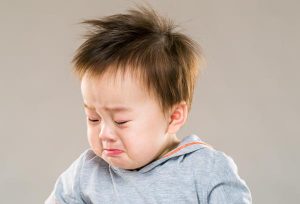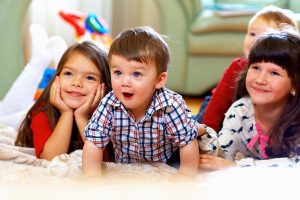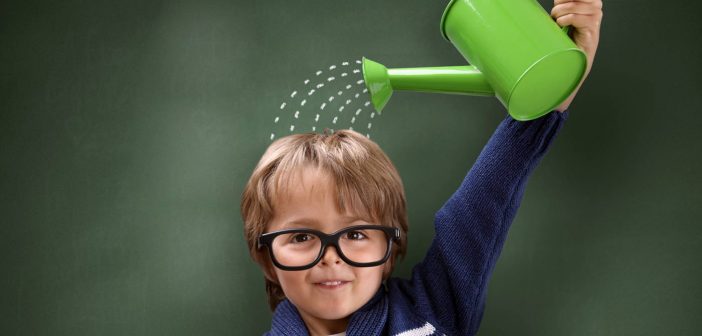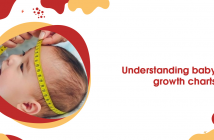A child’s social and emotional development continues from birth till they are 19 years of age. The two are intricately entwined with each other. A child’s health, personal characteristics and motivation; family; learning background; and community environment play a significant role in his/her social and emotional development. This blog is all about Stages of your child’s social and emotional growth.
Here is a breakdown of the social and emotional development signs at different ages:
2 months to 1 year
- By two months, infants can focus on your face and may even start smiling. Crying is their most effective way of communicating distress or need.
- By four months, they smile, play spontaneously and even begin to imitate faces that you make.
- By six months, babies recognise familiar family members and are responsive to your emotions. Looking into a mirror is something they enjoy immensely.
- By nine months, infants show anxiety around unfamiliar people or when you or grandparents are not around. Their preference for some toys becomes obvious.
- By the time they turn one, children begin pointing things and express their intention. As a parent we must encourage this interaction by acknowledging them. They also begin interacting with parents through toys—a sign of their willingness to and ability to engage with others.
18 months to 2 years
 During this stage, be ready for some temper tantrums as a sense of independence and communication skills increase. Kids become more interactive with others but mom and dad are still their favourite playmates. At this stage, it is crucial to expose your child to other kids. They may not talk much but will play alongside each other.
During this stage, be ready for some temper tantrums as a sense of independence and communication skills increase. Kids become more interactive with others but mom and dad are still their favourite playmates. At this stage, it is crucial to expose your child to other kids. They may not talk much but will play alongside each other.
Soon enough, you will be refereeing territorial battles among kids. They will fight over toys as their thinking is completely egocentric and their reaction guided by their desires. As parent you can help your child learn sharing and taking turns. Although, don’t be too optimistic. Sharing is not easy at this age but an introduction of the concept is important.
This age also brings in an interest in other people. Your child may wave or smile at unfamiliar people. Some children take time to warm up, which is perfectly alright.
3 to 4 years
At the age of three, most children are already going to preschool or are ready for it. They now seek other children to play with. You can guide them in navigating through the social situations. Make-believe play and dress ups are the highlight of this age. This is a phase where children are respectful of each other and learn to compromise enabling them to play with each other. Sharing is still a distant concept though.
Point out different emotions to your children (happy, sad, scared) when watching TV or reading a book. This will allow them to be more aware of their own feelings as well as those of others. They may hug or kiss to show empathy, when required.
At age four, children are ready for group interactions. Encourage them to be a part of team games such as soccer, with little rules or they may lose interest. They are now able to negotiate, resolve conflicts, understand the emotional ambience in a group and regulate other children’s behaviour.
Expect tug of wars on toys but the concept of sharing and turn taking is developing.
Children at this age are very physically affectionate, delightfully so. They engage in various pro-social behaviours and also become increasingly independent, which is tricky as they may decide to have their own way at the worst of moments. However, the confidence in their own ability is crucial for successful socialising skills.
5 to 6 years
 This age group is now conscious of its gender and therefore may prefer to play with the same sex. They still require adult intervention to resolve conflicts during playtime. At this stage, children absorb lots of information about the world and how it works. They will test boundaries but are still eager to please.
This age group is now conscious of its gender and therefore may prefer to play with the same sex. They still require adult intervention to resolve conflicts during playtime. At this stage, children absorb lots of information about the world and how it works. They will test boundaries but are still eager to please.
7 to 12 years
Kids are now aware of others’ perceptions and are able to deal with the wider world without adult help. An understanding of fairness and justice has started to seep in. Children now love to be a part of groups, begin to form closer friendships and are strongly influenced by peer group. They may withdraw from family activities to develop their own identity. They are still affectionate, silly and curious but may behave selfishly and rudely at times.
12 to 19 years
Teenagers become conscious of their bodily changes, some of them not so reassuring such as acne. They need lots of reassurance at this age.  In this transition phase from childhood to adulthood, their emotional maturity fluctuates between childish and adult needs. Gone are the days when they needed your approval. Whether you like it or not, they seek approval from their friends now.
In this transition phase from childhood to adulthood, their emotional maturity fluctuates between childish and adult needs. Gone are the days when they needed your approval. Whether you like it or not, they seek approval from their friends now.
Children of this age find security in group acceptance and will accordingly alter their behaviour and clothes. An interest in the opposite sex develops. They also re-appraise the values, beliefs and biases of their community and parents, for nothing is accepted anymore without question.
All children develop at different rates however it’s good to know the basic indicators of their social and emotional growth at different ages. Knowing what to expect from a child helps parents in understanding and dealing with their behaviour. It also ensures that any deficit or delay in their development can be promptly noted and addressed. You could also track physical, social and cognitive development of your child with just a few simple by creating an account at Nurturey.







